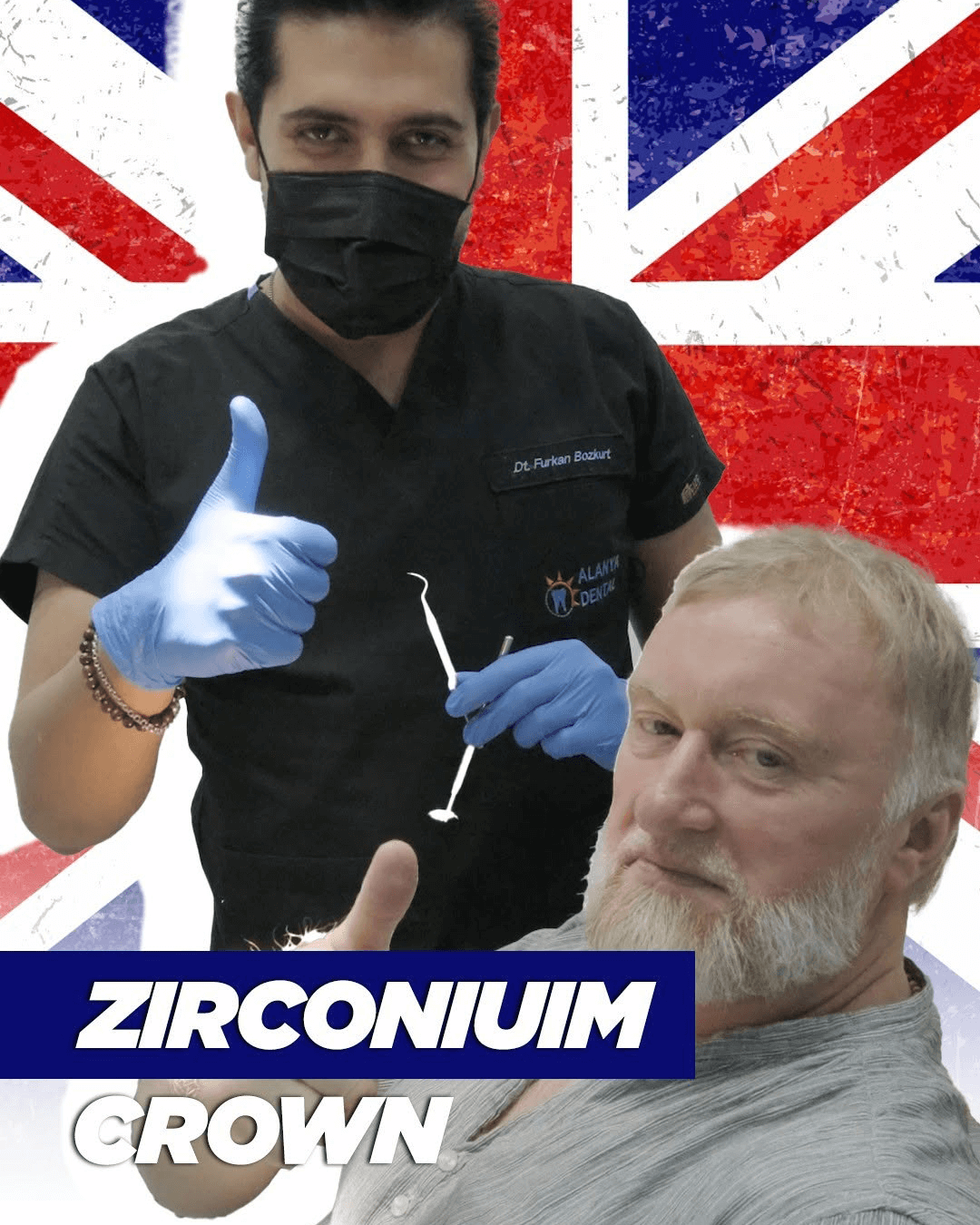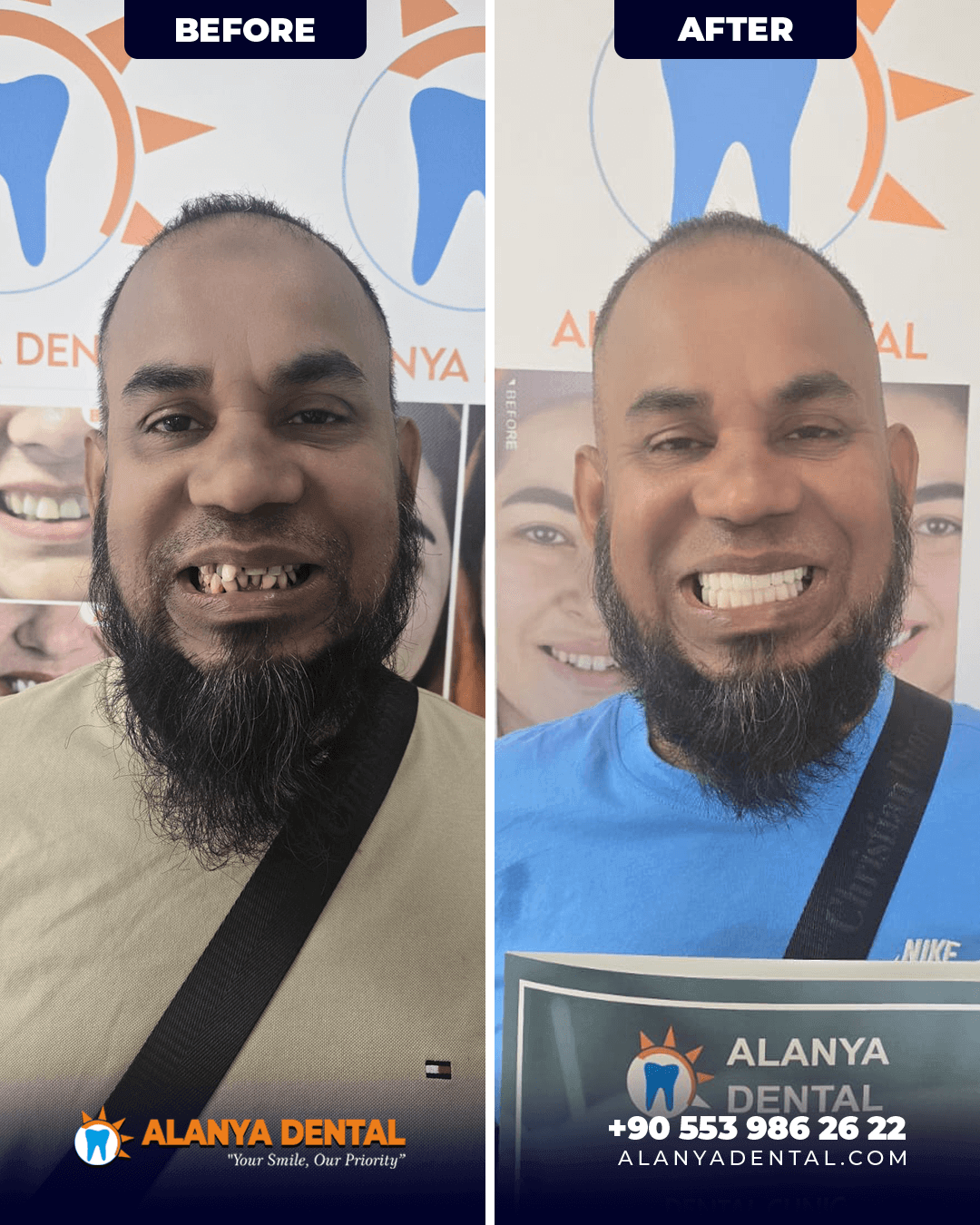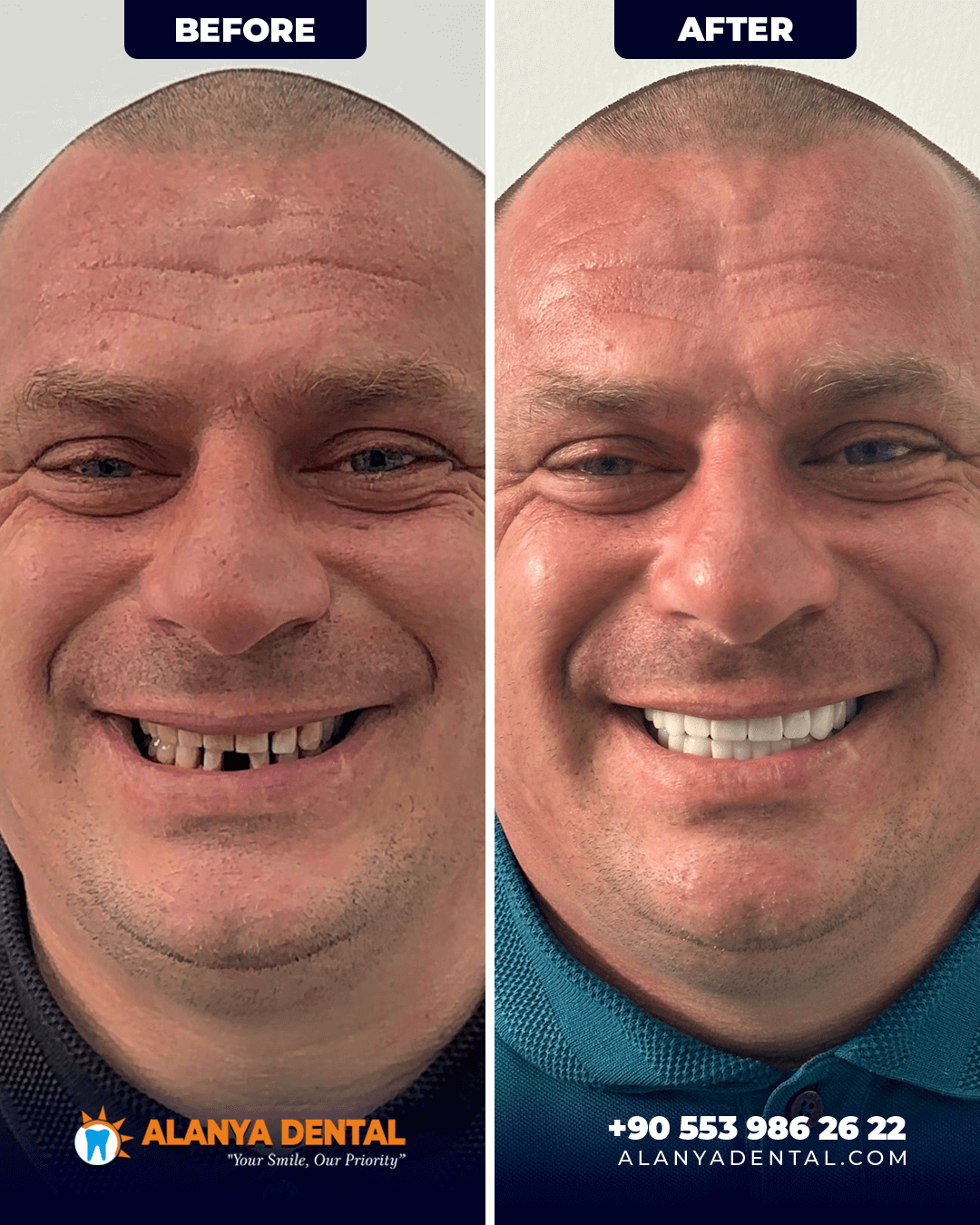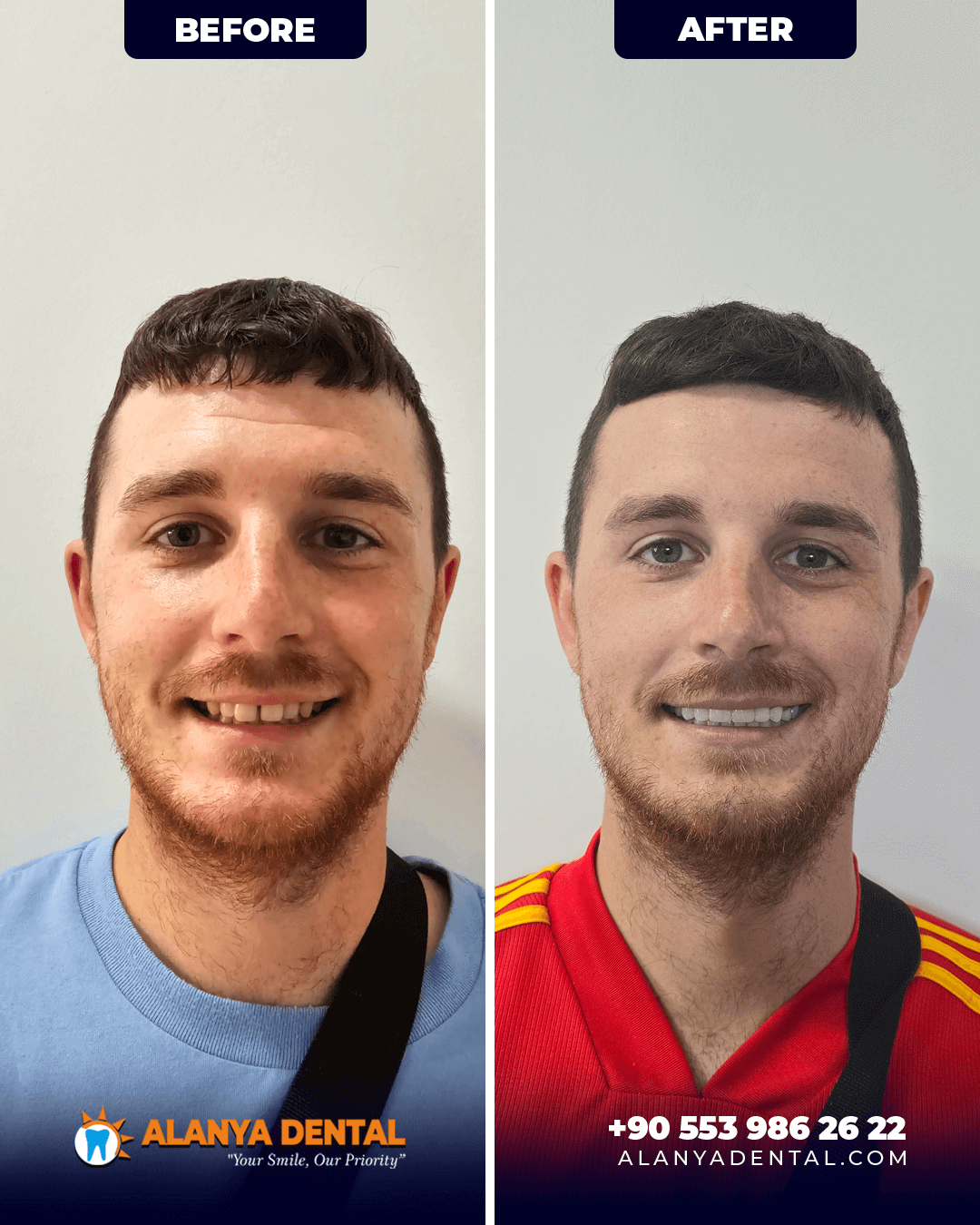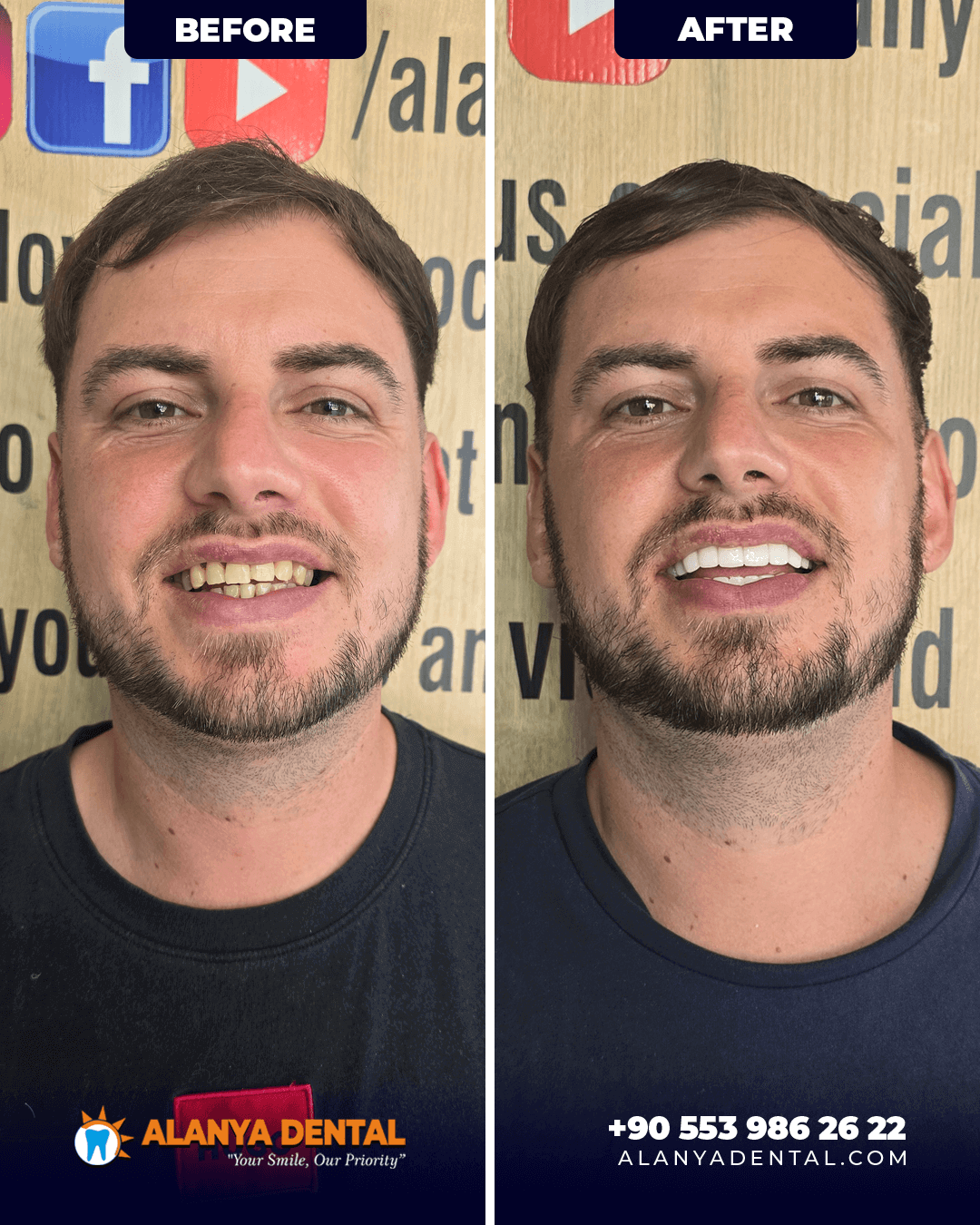Braces in Turkey

What Are Braces?
Braces are an orthodontic system that gradually moves teeth from their current position to their intended correct position. Small brackets, called brackets, are bonded to the tooth surface, and a wire threaded through these brackets exerts gentle, constant pressure to move the teeth. Problems such as crooked teeth, gap teeth, and jaw closing disorders can be treated with this method.


When Should Braces Treatment Be Done?
The timing of starting braces treatment is determined by the development of the teeth and the condition of the jaw structure. The ideal time for children is generally between the ages of 10 and 13, when permanent teeth begin to emerge. During this period, the jawbones are still forming, making it easier for the teeth to move. Early treatment can prevent major orthodontic problems that may arise in later years.
Braces are also possible for adults. As we age, bone structure becomes harder, which can prolong treatment time. However, with proper planning and regular checkups, successful results can be achieved. For adult patients, clear braces or aligner systems are more often preferred due to aesthetic concerns. Proper timing with Alanya Dental Clinic positively impacts both the duration and success of treatment.
What Should Be Considered During Braces Treatment?
Ortodonti tedavisi, yalnızca estetik açıdan değil, çene sağlığı ve çiğneme fonksiyonu açısından da önemli bir yatırımdır. Uzun süreli bir planlama gerektirir ve bu süreçte hastanın tedaviye olan uyumu, elde edilecek sonuçları doğrudan etkiler. Diş teli takıldıktan sonra günlük yaşamda yapılacak küçük değişiklikler, tedavi sürecinin daha konforlu ilerlemesine katkı sağlar. İşe diş teli tedavisinde dikkat edilmesi gerekenler;
Orthodontic treatment is a significant investment not only in terms of aesthetics but also in terms of jaw health and chewing function. It requires long-term planning, and the patient's compliance with treatment during this process directly impacts the results. Small changes to daily life after braces are placed can contribute to a more comfortable treatment process. Here are some things to keep in mind while braces treatment:
- Avoiding hard and sticky foods
- Regular brushing and flossing
- Attending orthodontist appointments on time
- Using recommended products to reduce sensitivity in braces
- Wearing protective devices to prevent oral injuries
- Limiting acidic beverage consumption
- Monitoring changes in teeth during treatment
Hard foods can damage brackets, requiring repair. Sticky foods can get stuck between the wires, negatively impacting both appearance and hygiene. Regular brushing prevents gum problems, while flossing removes plaque. Orthodontist checkups ensure the wires are held at the correct pressure.

Benefits of Braces Treatment
Orthodontic treatment not only aligns teeth but also offers significant benefits in terms of jaw joint health, speech quality, and overall oral hygiene. The results of treatment are evident not only in your smile but also in your long-term dental health. Here are the benefits of braces:
- Bringing teeth into ideal position
- Improving chewing function
- Ensuring alignment of the jaw joint
- Easier teeth cleaning
- Helping correct speech disorders
- Increasing self-confidence
- Reducing wear caused by irregular teeth
Correctly positioned teeth allow for better breakdown of food during chewing, which facilitates digestion. Achieving proper jaw joint alignment can reduce problems such as headaches and joint tension. Correcting gaps and crowding allows for easier cleaning between teeth with a brush and dental floss.
How to Care for Braces?
Braces care begins with choosing the right brush. Medium-hard, orthodontic brushes effectively clean around the brackets. Brushing should be done after every meal. Flossing plays a critical role in removing plaque from under the wires. Orthodontic floss or special floss threaders make this process easier.
Mouthwash reduces bacterial growth and prevents bad breath. Avoiding sticky and sugary foods between snacks protects tooth enamel. Individuals who participate in sports should wear a mouth guard to prevent damage to their braces. Avoiding hard-shelled foods will prevent brackets from becoming dislodged.


Braces Prices in Turkey
Orthodontic treatment in Turkey has attracted significant interest from both domestic and international patients in recent years. Treatment duration, the type of materials used, clinic location, and physician experience are among the factors that influence price. Because it's difficult to provide a precise figure, it's important to understand the factors that determine prices.
The material of the brackets used in treatment directly affects the cost. Metal brackets are generally more economical than clear ceramic brackets. Specialized solutions like lingual braces or clear aligners are more technically demanding, so their price range varies. Alanya Dental Clinic, one of Turkey's leading centers for quality service and patient satisfaction, offers a wide range of orthodontic treatments.
When Is the Right Time to Get Braces?
Braces are also possible for adults. Positive results can be achieved at any age in individuals with healthy tooth roots and jaw structure. Early diagnosis facilitates easier tooth movement, which can shorten treatment time.
An orthodontist-supervised examination provides a clear indication of the appropriate age for treatment. Planning is based on X-rays, intraoral measurements, and jaw analysis. Treatment is not only necessary for aesthetic reasons, but also for health reasons such as excessive tooth wear, temporomandibular joint disorders, and gum problems.

What Is the Shortest Time to Remove Braces?
For patients seeking quick results, dentists conduct a detailed pre-treatment assessment. Attending regular appointments, ensuring braces are not broken, and following all recommended care instructions can help shorten the treatment process. Eating habits also play a role in the treatment process.
Hard foods can damage the braces and prolong the process. In children and adolescents, tooth movement occurs more quickly because their bone structure is more flexible. In adults, tooth movement is relatively slow.


How Are Braces Applied?
Braces are a meticulously planned, multi-stage treatment process. The first step is a detailed examination of the patient's teeth and jaw structure. Once the necessary analyses are completed, a treatment plan is developed. Any cavities, tartar, or gum problems are treated before treatment begins. A healthy oral environment ensures a secure hold for the brackets.
Brackets are secured to the tooth surface with special adhesives. Each bracket is designed to transmit the force applied during treatment. The wire threaded through the brackets initiates tooth movement. The orthodontist adjusts the wire tension and shape at regular checkups. You may feel slight pressure and tenderness in the first few days, indicating tooth movement.
After the procedure is completed, the patient is given care instructions. Detailed information is provided regarding brushing techniques, special brushes, and dental floss. Sticky, hard, or shelled foods should be avoided while wearing braces. Damage to the brackets can disrupt treatment.
FAQ's
Frequently Asked Questions
Once braces are completed, the teeth are settled into their new positions. However, a "retaining" process is required for this position to be permanent. Retainers are typically used during the retention phase. Retainers can be either fixed or removable. Fixed retainers are bonded to the back surface of the teeth using a thin wire.
Treatment time varies depending on factors such as the type of orthodontic problem, the position of the teeth, jaw structure, and compliance with treatment. While the time may be shorter for mild misalignments, the process may take longer for complex cases. Alanya Dental Clinic provides detailed guidance throughout the treatment process, helping patients achieve their desired results.

Book Your Free Consultation Today!
Free Consultation

Healthy Teeth, Happy Smile!
Healthy teeth are the foundation of a confident and radiant smile — because when your teeth are healthy, every smile shines brighter and makes you feel happier inside and out.
Why Booking a Dental Appointment at Alanya Dental Clinic is Essential for Your Oral Health
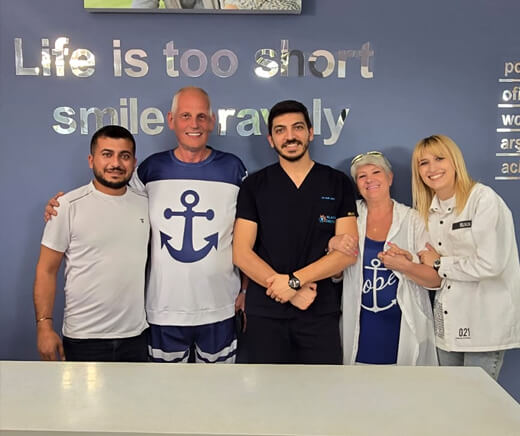

 TR
TR DE
DE Teeth Cleaning
Teeth Cleaning 


